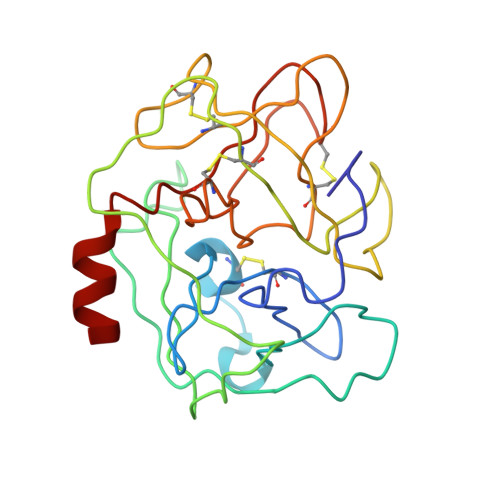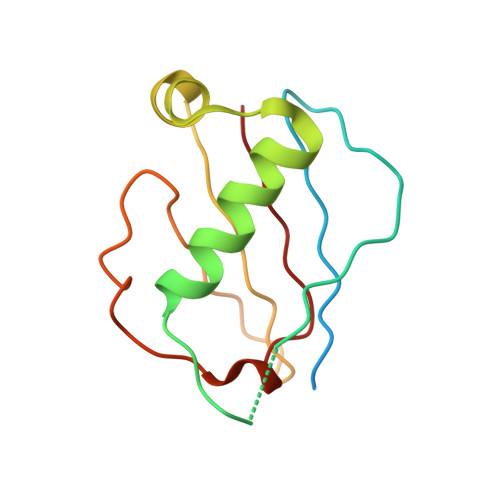Staphylococcus aureus secretes a unique class of neutrophil serine protease inhibitors.
Stapels, D.A., Ramyar, K.X., Bischoff, M., von Kockritz-Blickwede, M., Milder, F.J., Ruyken, M., Eisenbeis, J., McWhorter, W.J., Herrmann, M., van Kessel, K.P., Geisbrecht, B.V., Rooijakkers, S.H.(2014) Proc Natl Acad Sci U S A 111: 13187-13192
- PubMed: 25161283
- DOI: https://doi.org/10.1073/pnas.1407616111
- Primary Citation of Related Structures:
4NZL - PubMed Abstract:
Neutrophils are indispensable for clearing infections with the prominent human pathogen Staphylococcus aureus. Here, we report that S. aureus secretes a family of proteins that potently inhibits the activity of neutrophil serine proteases (NSPs): neutrophil elastase (NE), proteinase 3, and cathepsin G. The NSPs, but not related serine proteases, are specifically blocked by the extracellular adherence protein (Eap) and the functionally orphan Eap homologs EapH1 and EapH2, with inhibitory-constant values in the low-nanomolar range. Eap proteins are together essential for NSP inhibition by S. aureus in vitro and promote staphylococcal infection in vivo. The crystal structure of the EapH1/NE complex showed that Eap molecules constitute a unique class of noncovalent protease inhibitors that occlude the catalytic cleft of NSPs. These findings increase our insights into the complex pathogenesis of S. aureus infections and create opportunities to design novel treatment strategies for inflammatory conditions related to excessive NSP activity.
Organizational Affiliation:
Medical Microbiology, University Medical Center Utrecht, 3584 CX, Utrecht, The Netherlands;
















